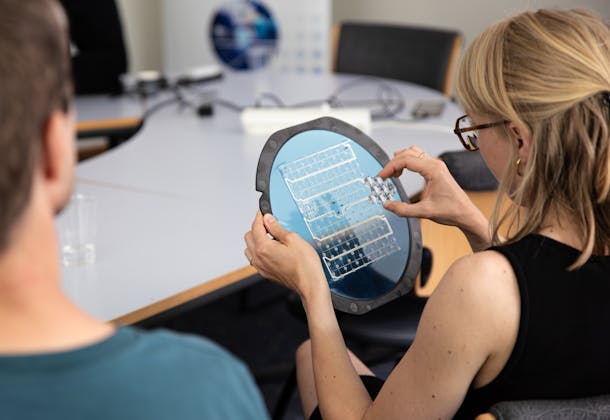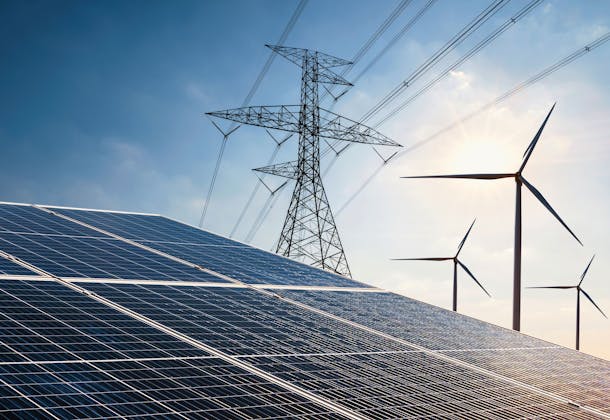Silicon solar cells have been widely used in the photovoltaic industry for many years due to their efficiency, reliability, and affordability. However, these cells are approaching their maximum theoretical efficiency limit of 29%, set by the properties of the silicon material. To overcome this limitation and further reduce the costs of solar electricity, scientists from EPFL's PV-Lab and CSEM have been exploring innovative approaches, such as using tandem architectures that stack multiple solar cells.
Surpassing Silicon’s limits
Tandem solar cells offer improved utilization of solar energy by optimizing each cell to capture different parts of the solar spectrum. In this context, research teams from EPFL and CSEM collaborated to engineer a tandem device that combines a perovskite top cell with a silicon bottom cell featuring micrometric pyramids. While the pyramidal texture enhances the silicon cell, it poses challenges for the standard perovskite deposition processes. However, by developing and mastering techniques to coat nanometric layers on textured surfaces, the scientists successfully demonstrated perovskite-on-silicon tandem solar cells with a certified power conversion efficiency of 31.25%. This achievement marks the first time a low-cost technology has surpassed the 30% efficiency milestone. The results, initially announced in 2022 have now been published in Science, which delves into the science behind the breakthrough.
Mastering coating techniques
A typical limitation of perovskite-on-silicon tandem cells are the recombination losses that occur at the perovskite interface with the electron selective contact. Recombination refers to the loss of photogenerated charge carriers (electrons and holes) before they can be collected and utilized to generate electricity. To address this issue, EPFL’s and CSEM’s scientists incorporated an additive in the perovskite processing sequence. This additive effectively regulated the perovskite crystallization process and passivated the perovskite top interface, particularly on textured surfaces.
A brighter energy future
The breakthrough described in Science entitled "Interface passivation for 31.25%-efficient perovskite/silicon tandem solar cells" experimentally validates the efficiency potential of perovskite-on-silicon tandem solar cells. Further research efforts are now dedicated to addressing scalability and reliability challenges, with the ultimate goal of bringing perovskite-on-silicon tandem technology closer to commercial viability. By overcoming these hurdles, EPFL and CSEM are accelerating the adoption of this transformative technology and contributing to the global energy transition.


